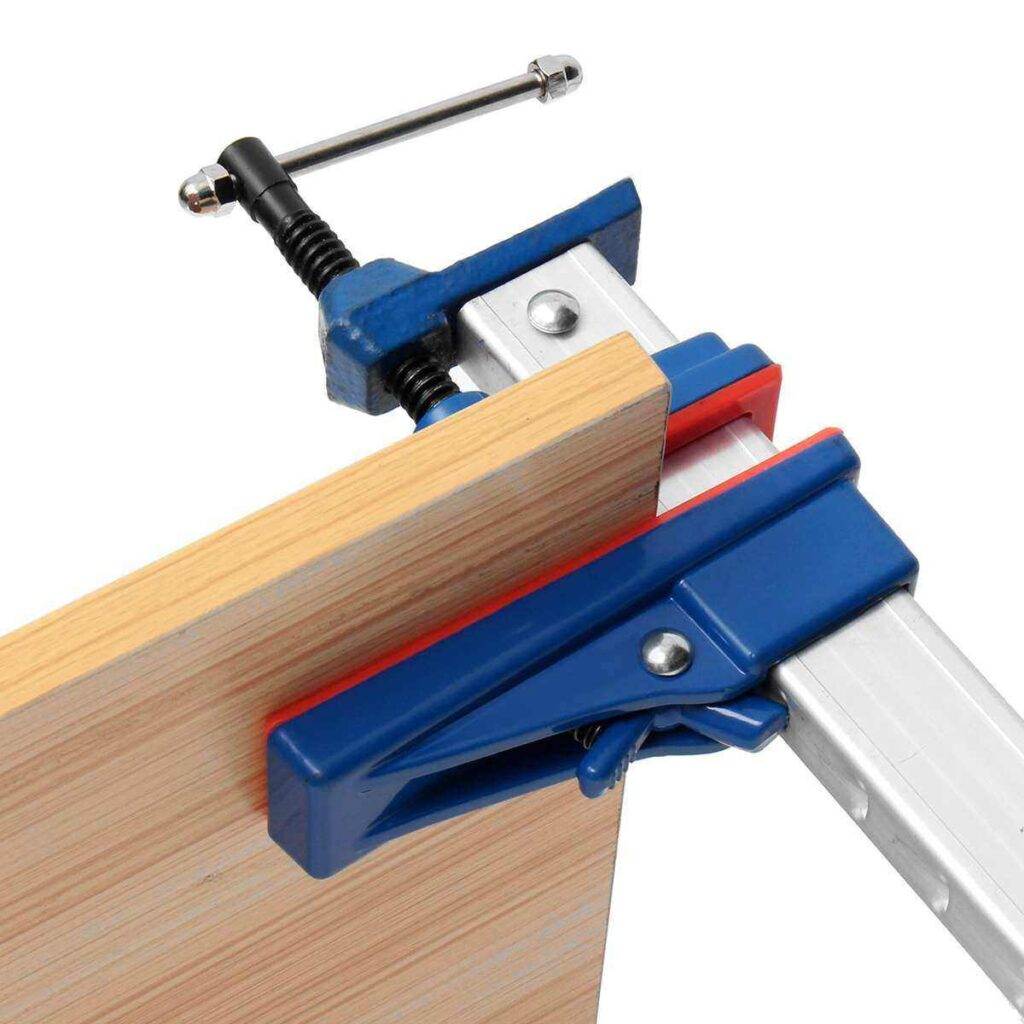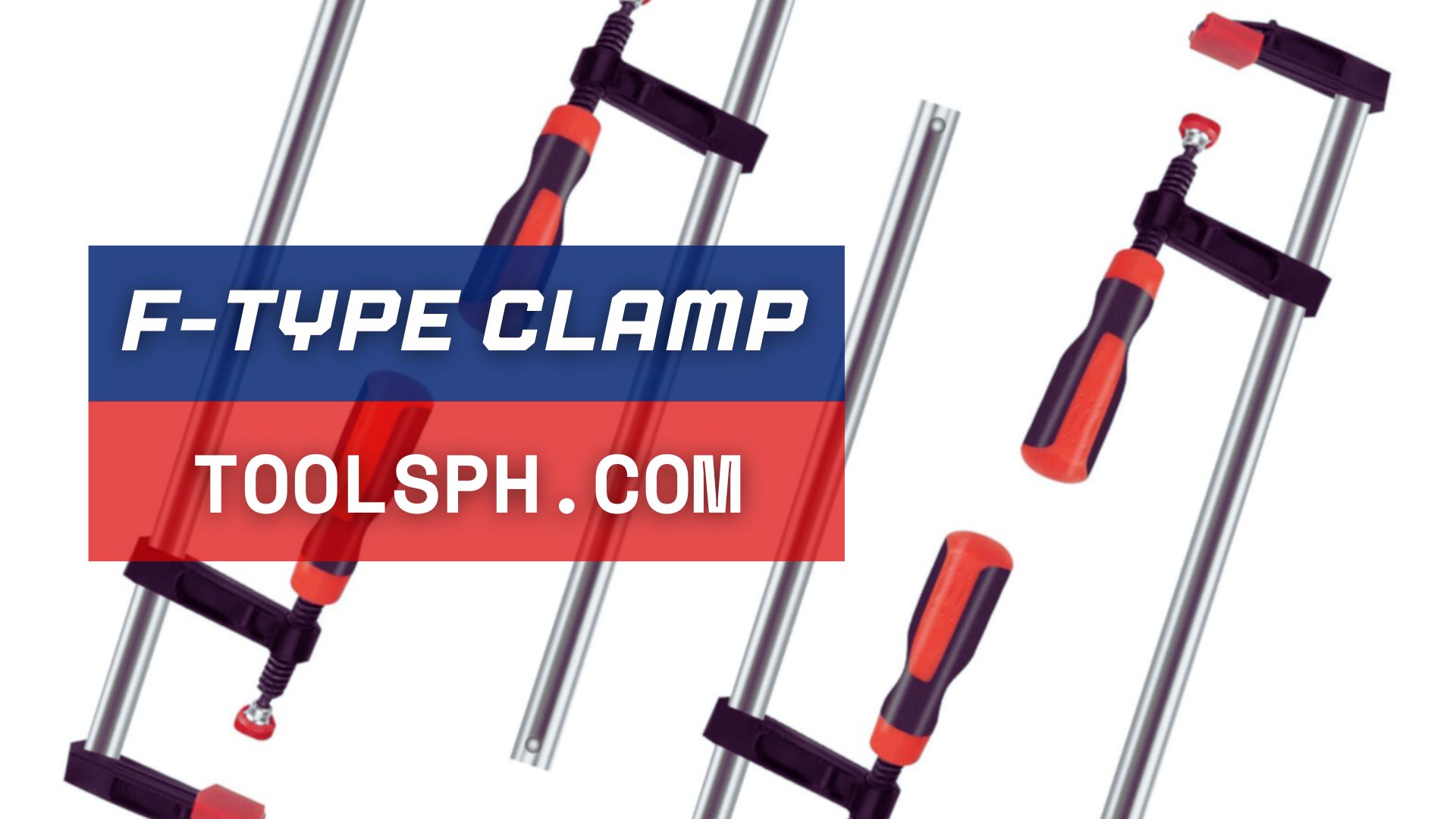A flexible woodworking tool for safely clamping materials together during drilling, gluing, or assembly is the F-type clamp. It is made up of two jaws—one sliding and the other fixed—that are joined by a threaded spindle mechanism. The name of the clamp comes from the fixed jaw’s F-shaped design. The sliding jaw can be adjusted to apply pressure by turning the spindle handle, which essentially clamps the workpieces in place. F-type clamps are renowned for their strength, stability, and ease of use. They are available in a range of sizes and are indispensable tools for carpentry, woodworking shops, and do-it-yourself projects that call for accurate and dependable clamping.
F-Type Clamp Prices
F-type clamp prices vary depending on the brand, size, and material used. Its price ranges from ₱160.00 to ₱265.00
| Details | Size | Material | Prices |
| Wadfow | 50 x 200 mm | Zine-plated thread bar with Plastic Handle | ₱160.00 |
| Wadfow | 80 x 300 mm | Zine-plated thread bar with Plastic Handle | ₱265.00 |
| Wadfow | 50 x 250 mm | Zine-plated thread bar with Plastic Handle | ₱175.00 |
| Tolsen | 50 x 150 mm | Forged Steel | ₱205.00 |
| Tolsen | 50 x 250 mm | Forged Steel | ₱220.00 |

Advantages of F-Type Clamp
Versatility – These tools are useful for various woodworking tasks, including drilling, assembling, gluing, and clamping workpieces before machining.
Robust Clamping Power – F-style clamps deliver a robust and uniform force, guaranteeing a firm grip on workpieces without slipping while performing tasks.
Adjustability – Various workpiece sizes can be accommodated by simply adjusting the sliding jaw along the bar, providing flexibility in clamping arrangements.
Stability – Their robust design and construction offer stability, lowering the possibility of workpiece movement or shifting while in operation.
Ease of Use – To tighten or release an F-type clamp, one only needs to make minor adjustments to the spindle handle.
Disadvantages of F-Type Clamp
Limited Throat Depth – F-type clamps usually have a limited throat depth, which can make it difficult to use them in some situations, particularly when clamping larger or thicker workpieces.
Size and Weight – Larger F-type clamps may be unwieldy and heavy, which makes them less practical for use on mobile woodworking projects or in confined areas.
Limited Clamping Capacity – Compared to other types of clamps, some F-type clamps may have a limited clamping capacity, which may require the use of multiple clamps for larger projects.
Manual Operation – Adjusting and tightening F-type clamps by hand is necessary, unlike some clamps that have powered or quick-release mechanisms. This can take time, particularly when working on several clamping configurations.
Video of F-Type Clamp
FAQs
What is the purpose of F-type clamps?
F-type clamps are mostly used in the woodworking industry to hold workpieces in place while drilling, gluing, assembling, and performing other operations that call for a firm grip.
How can I select the appropriate F-type clamp size?
Take into account the dimensions of your workpieces and the necessary throat depth for your undertakings. Select a clamp that can meet your needs in terms of throat depth and clamping capacity.
What typical errors should one avoid when utilizing F-type clamps?
Typical errors include using the clamp on non-flat or non-parallel surfaces, overtightening the clamp, which can damage the workpiece or clamp, and improperly aligning the clamp jaws, which can cause slippage or misalignment.
Is it possible to clamp delicate or thin materials with F-type clamps?
F-type clamps might not be the best choice when clamping delicate or thin materials because the clamping force could distort or damage the material. To apply kinder pressure on such materials, think about utilizing specialty clamps with softer or adjustable clamping pads.
Is it possible to combine F-type clamps with other clamping tools?
Indeed, F-type clamps can be used to create more intricate clamping setups for particular woodworking tasks or projects by combining them with other clamping tools or accessories.


